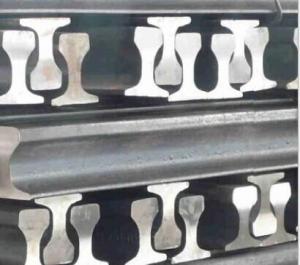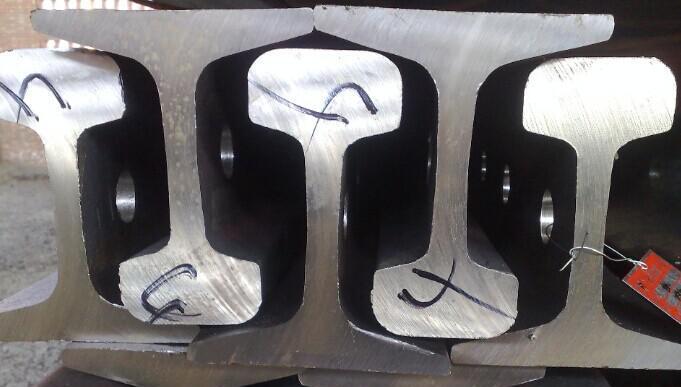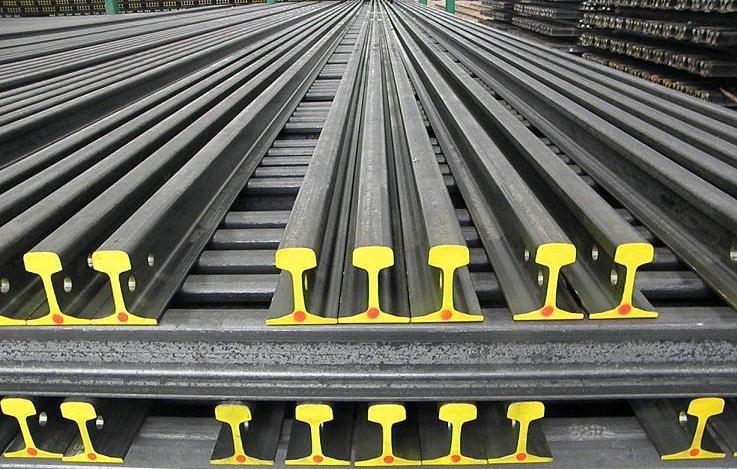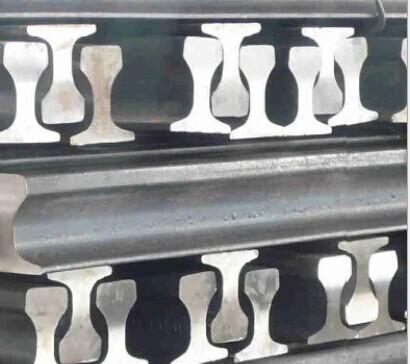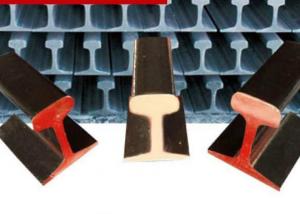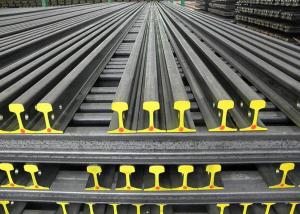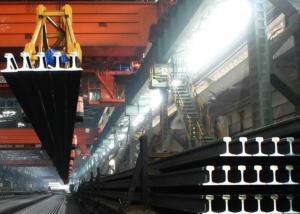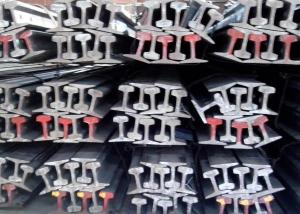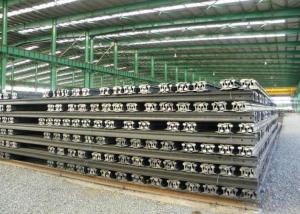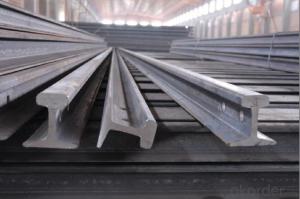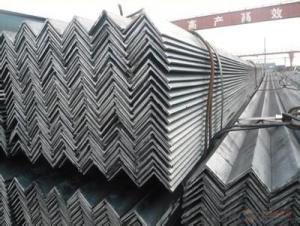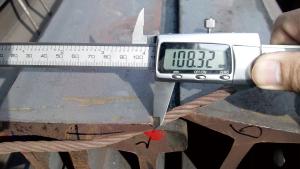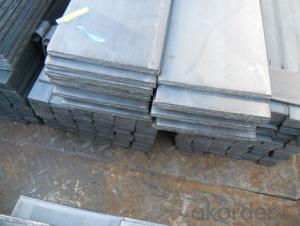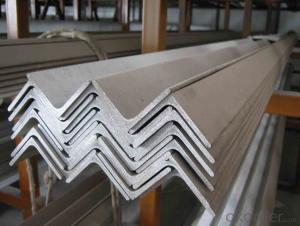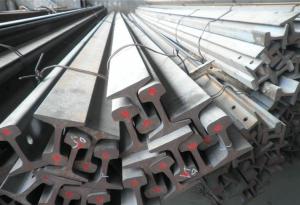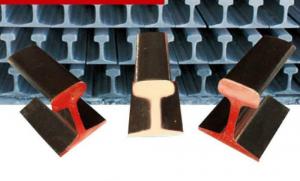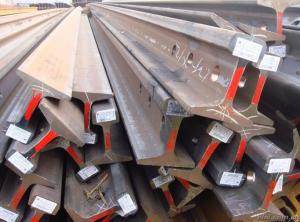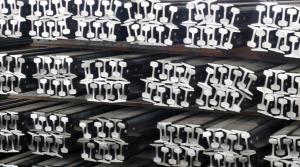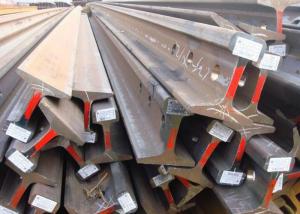Hot Rolled Light Steel Rail Q235 with High Quality
- Loading Port:
- China Main Port
- Payment Terms:
- TT or LC
- Min Order Qty:
- 20 m.t.
- Supply Capability:
- 5000 m.t./month
OKorder Service Pledge
OKorder Financial Service
You Might Also Like
Product Description:
OKorder is offering Hot Rolled Light Steel Rail Q235 with High Quality at great prices with worldwide shipping. Our supplier is a world-class manufacturer of steel, with our products utilized the world over. OKorder annually supplies products to European, North American and Asian markets. We provide quotations within 24 hours of receiving an inquiry and guarantee competitive prices.
Product Applications:
Hot Rolled Light Steel Rail Q235 with High Quality is mainly used in forest region, mines, factories and construction sites laid of the place such as temporary transport line and light motorcycles with line.
Product Advantages:
OKorder's Hot Rolled Light Steel Rail Q235 with High Quality are durable, strong, and with competitive price
Main Product Features:
· Premium quality
· Prompt delivery & seaworthy packing (30 days after receiving deposit)
· Corrosion resistance
· Can be recycled and reused
· Mill test certification
· Professional Service
· Competitive pricing
Product Specifications:
Manufacture: Hot rolled
Certificates: ISO, SGS, BV, CIQ
Length: 6m – 25m, as per customer request
Packaging: Export packing, nude packing, bundled
Production Standard: GB 11264-89, GB2585-81, AREMA2008, JIS, DIN536, EN13674-1-2003, etc.
Sizes: 9kg-60kg
FAQ:
Q1: Why buy Materials & Equipment from OKorder.com?
A1: All products offered byOKorder.com are carefully selected from China's most reliable manufacturing enterprises. Through its ISO certifications, OKorder.com adheres to the highest standards and a commitment to supply chain safety and customer satisfaction.
Q2: How do we guarantee the quality of our products?
A2: We have established an advanced quality management system which conducts strict quality tests at every step, from raw materials to the final product. At the same time, we provide extensive follow-up service assurances as required.
Q3: How soon can we receive the product after purchase?
A3: Within three days of placing an order, we will begin production. The specific shipping date is dependent upon international and government factors, but is typically 7 to 10 workdays.
Q4:What is the package
A4: Standard seaworthy packing or as customer required; all goods are packed in bundle with steel strips and shipped by break bulk vessel or container
Q5:Can OKorder.com make the color marking?
A5: There will be color marking on both end of the bundle for the cargo delivered by bulk vessel. That makes it easily to distinguish at the destination port.
Images:
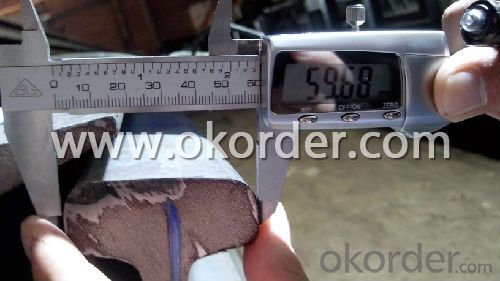

- Q: How are steel rails maintained in curved railway tracks?
- Steel rails in curved railway tracks are maintained through regular inspections, monitoring, and maintenance practices. This includes checking for any signs of wear, damage, or defects on the rails, such as cracks or excessive wear on the inside of the curve. If any issues are detected, appropriate actions are taken, such as grinding or replacing the affected rail sections. Additionally, measures like lubrication, adjusting the rail alignment, and monitoring the track's stability are undertaken to ensure safe and efficient operations on curved railway tracks.
- Q: What are the environmental benefits of using steel rails?
- One major environmental benefit of using steel rails is their durability and longevity. Steel rails have a longer lifespan compared to other materials used for rail tracks, such as wood or concrete. This reduces the need for frequent replacements, which in turn reduces the amount of raw materials and energy required for manufacturing and transportation. Additionally, steel rails are recyclable, meaning that at the end of their life cycle, they can be melted down and repurposed, reducing waste and conserving resources. Moreover, steel rails provide a smooth and stable surface for trains, resulting in lower friction and energy consumption during transportation. These factors combined make steel rails a more sustainable and environmentally friendly option for railway infrastructure.
- Q: How do steel rails affect train ride comfort?
- Steel rails play a crucial role in determining the comfort of a train ride. Firstly, steel rails provide a smooth and stable track surface for the train to travel on. The consistent and even surface of the rails ensures that the train does not experience sudden jolts or bumps, resulting in a more comfortable ride for passengers. Moreover, steel rails are designed to minimize vibrations and noise generated by the train. They absorb a significant amount of the impact and vibrations caused by the wheels, reducing the transmission of these vibrations to the train and its passengers. This dampening effect helps in reducing discomfort and fatigue that passengers may experience during their journey. Additionally, steel rails are engineered to maintain their shape and alignment over long distances. This is crucial as any irregularities or misalignment in the track can lead to a bumpy and uncomfortable ride. Steel rails are designed to resist wear and tear, ensuring a more consistent and comfortable ride for passengers. Overall, steel rails contribute significantly to the comfort of a train ride by providing a stable, smooth, and low-vibration track surface. Their ability to minimize jolts, vibrations, and noise enhances the overall experience for passengers, making their journey more pleasant and enjoyable.
- Q: How do steel rails contribute to reducing train delays?
- Steel rails contribute to reducing train delays in several ways. Firstly, steel rails provide a smooth and stable surface for trains to travel on. This reduces the chances of derailment or accidents, which can lead to significant delays. The strength and durability of steel rails also ensure that they can withstand heavy loads and constant use, minimizing the need for frequent repairs or replacements. Furthermore, steel rails have a high resistance to wear and tear, which helps maintain the track in good condition for a longer time. This reduces the likelihood of track failures or disruptions that could cause delays. Additionally, the even and consistent surface of steel rails allows for better traction and control, enabling trains to accelerate, decelerate, and maneuver more efficiently. Moreover, steel rails are designed to be highly resistant to changes in temperature and weather conditions. This means that they are less prone to expanding or contracting due to extreme heat or cold, reducing the risk of track buckling or misalignment. By providing a stable and reliable track infrastructure, steel rails enhance the overall reliability and punctuality of train services, minimizing delays and ensuring smoother operations.
- Q: How are steel rails tested for impact resistance?
- Steel rails are tested for impact resistance through a process known as the Charpy test. In this test, a small notched sample of the steel rail is subjected to a controlled impact from a swinging pendulum. The energy absorbed by the sample during the impact is measured, providing an indication of its toughness and ability to withstand sudden forces. This test helps ensure that steel rails can withstand potential impacts from heavy loads or accidents, ensuring the safety and durability of rail infrastructure.
- Q: How are steel rails protected from electrical interference?
- The process of bonding protects steel rails from electrical interference. Bonding involves establishing a low-resistance electrical connection between different metal components, such as steel rails, in order to eliminate any potential differences in electrical potential. To safeguard against electrical interference, bonding cables or wires are installed at regular intervals along the rail tracks. These cables or wires are typically constructed from copper or other highly conductive materials. They are securely attached to the steel rails using specialized clamps or welded joints. The presence of bonding cables forms a continuous electrical path along the rail tracks, ensuring the swift and efficient dispersion of any electrical current or interference. By creating a low-resistance route, the bonding cables help prevent the accumulation of electrical potential differences between various sections of the rail tracks, thereby minimizing the risk of electrical interference. Moreover, the bonding cables also serve another important purpose: they contribute to the reduction of electrical shock hazards for railway personnel and passengers. By establishing a continuous electrical connection, any stray electrical currents or faults are safely redirected away from the steel rails and into the grounding system, thereby preventing potential harm to individuals in close proximity to the tracks. In conclusion, bonding is a vital technique for shielding steel rails from electrical interference. It ensures the secure and efficient operation of railway systems by effectively dispersing electrical currents and mitigating potential hazards associated with electrical interference.
- Q: How do steel rails impact noise pollution?
- Steel rails can contribute to noise pollution due to the vibrations caused by trains passing over them. These vibrations can amplify and transmit noise, resulting in higher levels of noise pollution in the surrounding areas. However, various measures such as rail dampers and noise barriers can be implemented to mitigate the impact of steel rails on noise pollution.
- Q: How do steel rails contribute to train track alignment maintenance?
- The maintenance of train track alignment heavily relies on steel rails. To begin with, steel rails play a vital role in providing a stable foundation for train travel. They are specifically designed to withstand the immense weight and pressure exerted by trains, thus ensuring the straightness and alignment of the tracks. Additionally, the steel rails are strategically laid and securely fastened to the sleepers or ties at precise intervals. This meticulous installation helps to maintain the accurate gauge or distance between the two rails. The gauge is critical for the safe and efficient operation of trains, as it greatly reduces the risk of derailments or accidents. Furthermore, steel rails possess exceptional durability and resistance to wear and tear. They can endure heavy usage and constant friction between the train wheels and the tracks. This durability significantly minimizes the frequency of realignment or track replacement, ultimately saving valuable time and resources. Moreover, steel rails exhibit remarkable resistance to deformation caused by temperature fluctuations. They have the ability to expand and contract within certain limits without compromising their alignment. This thermal stability is particularly crucial in regions with extreme temperature variations, as it ensures the proper alignment of the tracks. Overall, steel rails are an indispensable component in the maintenance of train track alignment. Their stability, precise installation, durability, and thermal resistance all contribute significantly to keeping the tracks straight, aligned, and safe for train operations.
- Q: How do steel rails withstand heavy traffic loads?
- Steel rails are designed to withstand heavy traffic loads due to their high tensile strength and durability. The steel used in rail construction is carefully chosen to have properties that allow it to bear the weight of trains and resist deformation. Additionally, the rails are properly aligned and fastened to the sleepers, providing stability and distributing the load evenly. Regular maintenance and inspection ensure any signs of wear or damage are identified promptly, allowing for timely repairs and replacements to maintain the rails' ability to withstand heavy traffic loads.
- Q: How are steel rails replaced when they are damaged?
- Replacing damaged steel rails involves several steps. Firstly, the identification of the damaged rail section can be done through regular inspections or by responding to reports of unusual vibrations, rail cracks, or signs of wear and tear. Once the damaged section is located, it is necessary to temporarily halt rail traffic to prioritize worker safety. Next, specialized rail maintenance crews are dispatched to remove the damaged rail. They utilize heavy machinery, such as cranes, track jacks, and rail tongs, to lift and extract the old rail from the track. This task requires precise coordination and expertise to maintain the stability and alignment of the remaining rails. Following the removal of the damaged rail, the new rail is prepared for installation. This involves cutting the new rail to the appropriate length and drilling holes for rail fasteners, which will secure it to the track. The new rail is then meticulously positioned and aligned with the existing track. Hydraulic jacks and alignment devices are utilized to achieve precise alignment and gauge. Once the new rail is properly positioned, it is secured to the track using rail fasteners, such as bolts or clips. These fasteners provide stability and accommodate the expansion and contraction of the rail due to temperature changes. Finally, the track undergoes inspection and testing to ensure that the replacement rail is correctly installed and complies with safety standards. This may involve conducting ultrasonic or visual inspections to detect any defects or abnormalities in the new rail. In summary, the replacement of damaged steel rails necessitates a skilled workforce, specialized equipment, and meticulous coordination to ensure the safety and efficiency of the process.
Send your message to us
Hot Rolled Light Steel Rail Q235 with High Quality
- Loading Port:
- China Main Port
- Payment Terms:
- TT or LC
- Min Order Qty:
- 20 m.t.
- Supply Capability:
- 5000 m.t./month
OKorder Service Pledge
OKorder Financial Service
Similar products
Hot products
Hot Searches
Related keywords


